Spain’s national holiday celebrates the “discovery” (although nowadays we recognise that a better term might be “invasion” or a “conquest”) of the Americas and the creation of Hispanic culture. It’s also known as el Día de la Hispanidad (Day of the Hispanic identity), because it is also celebrated in Latin America under various names: Día del Encuentro de Dos Mundos (Chile), Día de los Pueblos Originarios y del Diálogo Intercultural (Peru), Día del Respeto a la Diversidad Cultural (Argentina), Día de la Raza (Honduras, El Salvador). In the USA it’s celebrated as Columbus Day. In Canada it falls on the same day as Thanksgiving.
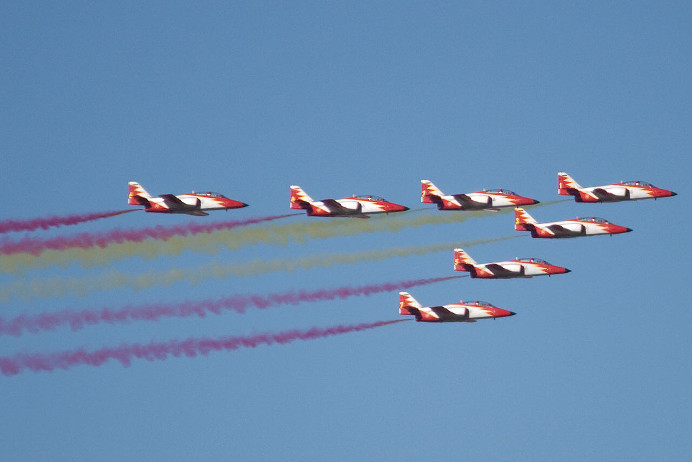
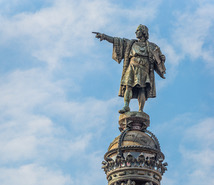
Speaking about Columbus: This statue is emblematic of Barcelona. Strangely, the statue is pointing in the wrong direction, towards the Mediterranean, to the east— and Columbus didn’t set sail from Barcelona.
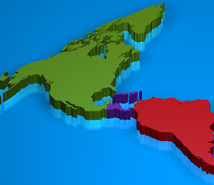
By the way, in Spanish “América” often means what people in many other countries call “The Americas” or North, Central, and South America.
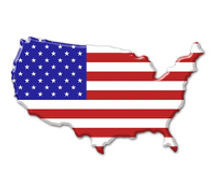
And although this country is often called America in colloquial language, its formal name is Estados Unidos, with the initials EEUU. The letters are duplicated to indicate the plural form.

To get back to the Fiesta Nacional in Spain: traditionally it includes a military parade attended by the king and other members of the royal family, along with the President and other representatives of the central government, as well as representatives of the autonomous communities of Spain.
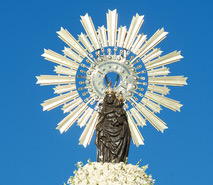
In Spain the date coincides with the Fiesta del Pilar, in honour of the patron saint of Hispanidad. This is a statue of the Virgin of Pilar, decorated with flowers, during the celebration of this day in Zaragoza.
Happy Party!

